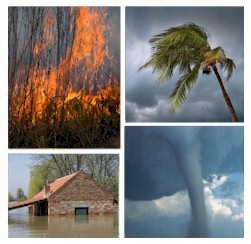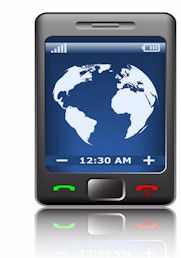|
|


Emergency Alert System
 This section of our technical library presents articles written about Emergency Alert Systems and Disaster Recovery definitions, terms and related information.
This section of our technical library presents articles written about Emergency Alert Systems and Disaster Recovery definitions, terms and related information.
The 911Broadcast emergency notification and alert service can deliver a large number of phone calls using a network of phone systems employing digital phone lines simultaneously. Should a disaster such as a snow storm, wild fire or flood hit your area, 911Broadcast systems can alert your community quickly providing specific instructions if an evacuation is required.
This service is available using our emergency broadcasting systems. If a dangerous chemical spill occurs in your community, you can target specific areas to call. If a severe snow storm hits your area, your community can be notified of school closings or event cancellations.
Automated Notification Systems
The following is an extract from the article "Best practice: how to use automated notification systems" By Harvey Fawcett.
"Using automated systems to deliver crisis messages is accepted as an excellent method of accurately and quickly communicating with groups of responders, staff and other relevant agencies in a crisis. However, having the raw capability to contact lots of people is only the start of an effective crisis communications capability.
Without knowing how to effectively communicate using automated systems means that poorly defined and structured messages are simply propagated more quickly than using manual cascades.
This paper aims to provide readers with an insight into how to use automated notification systems effectively.
Selection of communications media
The type of communication media used, for example voice or e-mail, must be dependant on the type of message being delivered. It is a mistake to pick the communications media first and then format the actual message. Decide the message first then choose the media.
Voice
Delivering messages by pre-recorded or synthesised voice is simply not suited for long or verbose messages telling contacts what to do, where to go and what has happened. If a responder is, for example, driving or it’s 3 o’clock on a Sunday morning then a long detailed message will be ineffective.
Voice is, however, supremely suited for short punchy messages and is the most effective means of eliciting confirmation of response or Estimated Time of Arrival, this is not the same as confirmation of message delivery as supplied by e-mail, fax and text.
Voice messages would normally be used to say:
‘Something has happened, follow your procedures for what to do next’
Notification systems should not be used as a replacement for responder training and rehearsals; message recipients should know what to do next.
Text (SMS)
Short Messaging Service (SMS) can deliver up to 160 characters which is sufficient for most messages. Text would often be used in conjunction with voice to add detail to a short voice message. Emergency text messages are economical but there are no delivery guarantees, if a network is busy the message may be delivered hours or days late.
Text messages are persistent; they can stay in the network for many days until the subscriber’s handset logs onto a cell. Whilst useful, this can also cause problems. The message may be sent on Wednesday but might not actually be delivered until Friday. If the message was time sensitive this time delay could have serious consequences and create confusion.
Obtaining delivery receipt is relatively simple but having a return path to elicit useful information such as ETA is more complex, although achievable and depends on the responder ‘doing something after the message was received’, not always reliable given the situations in which crisis messages are sent.
Pager
The message length is dependant on the type of pager and network but is typically up to 240 characters. Whilst performance is very good, messages are not persistent. If for example a responder works in a major city with an underground rail network they may spend significant amounts of time unavailable. This is not known to the sender.
E-mail
Again, e-mail is suitable for long and detailed messages and can be sent to large groups relatively quickly. E-mail is a robust means of communications as it is usually delivered over the Internet, an extremely reliable network. There are no delivery guarantees and obtaining return information, whilst appearing simple, is less so when dealing with large numbers.
Fax
Fax messages use simple technology and when delivered are portable. Because it is real time, delivery receipt is very easy to obtain but eliciting confirmation of action is difficult.
Web
Using automated notification systems to deliver content to web pages is often an overlooked method of crisis communications. As mentioned above, the Internet is a robust network and messages on low graphics web sites can be viewed by many thousands of people. Of course they have to know the message is there, this is where other media can be used to alert a responder that a particular web page now contains updated information.
Basically, use voice for short punchy messages followed up with textual media for detailed information....."
To view the entire article, please contact Harvey Fawcett, operations director of 247i Limited. 247i has developed 247i Messenger, a solution which combines the power of an enterprise class notification network with highly trained personnel operating in an IS17799 security management framework to deliver a comprehensive crisis notification service.
‘The 247i Crisis Notification Methodology’ is a collection of systems and procedures used to deliver secure, reliable, accurate, easy to use and above all else, effective, crisis notification.
For further information please contact Alan Lloyd, commercial director, +44 (0) 870 990 9816 alan.lloyd@247i.co.uk
Emergency Broadcast System Phones and Networks
 DSC provides the most comprehensive emergency phone solutions and emergency services for the emergency broadcast system marketplace today. Whether you need to purchase your own emergency phone dialer or utilize our emergency dialing service, you can rely on us to deliver your alert messages.
DSC provides the most comprehensive emergency phone solutions and emergency services for the emergency broadcast system marketplace today. Whether you need to purchase your own emergency phone dialer or utilize our emergency dialing service, you can rely on us to deliver your alert messages.
When an emergency arises in your community, our emergency phone systems and service can contact your residents quickly and efficiently.
Should a disaster such as a forest fire or chemical spill threaten your residents, we can provide emergency alerts and evacuation instructions immediately.
Plus our emergency autodialers can connect calls to members of your emergency response team who are working at home or in remote locations.
Contact DSC for a FREE analysis and quote and to learn more about our emergency autodialers and services.
|




 This section of our technical library presents articles written about Emergency Alert Systems and Disaster Recovery definitions, terms and related information.
This section of our technical library presents articles written about Emergency Alert Systems and Disaster Recovery definitions, terms and related information.
 DSC provides the most comprehensive emergency phone solutions and emergency services for the emergency broadcast system marketplace today. Whether you need to purchase your own emergency phone dialer or utilize our emergency dialing service, you can rely on us to deliver your alert messages.
DSC provides the most comprehensive emergency phone solutions and emergency services for the emergency broadcast system marketplace today. Whether you need to purchase your own emergency phone dialer or utilize our emergency dialing service, you can rely on us to deliver your alert messages.